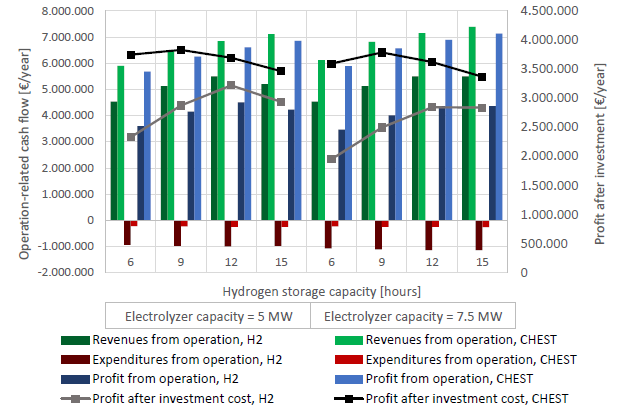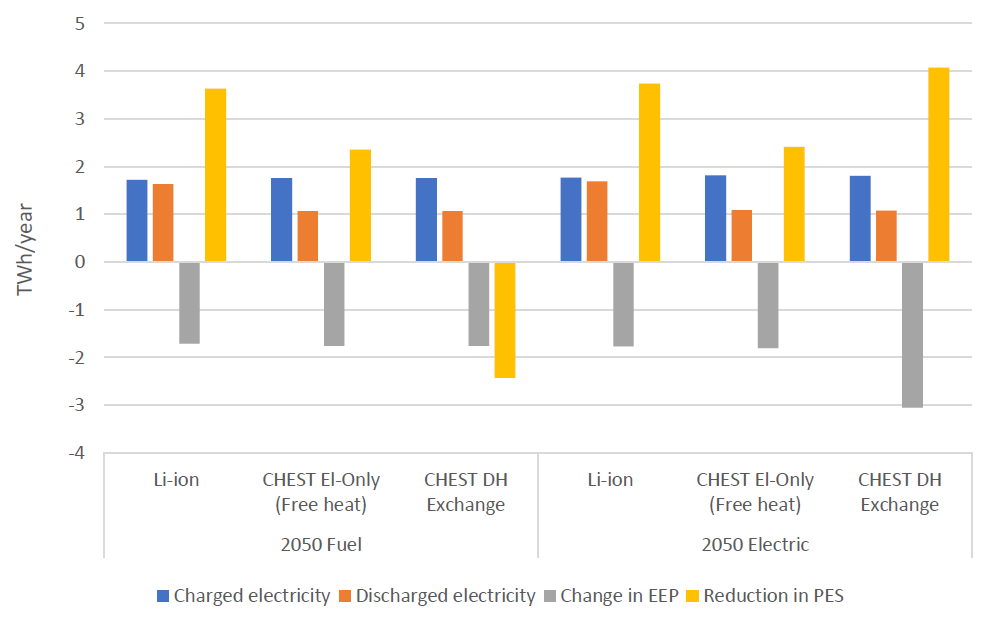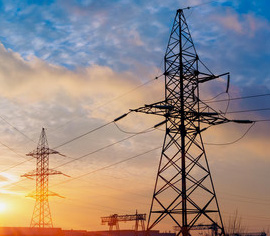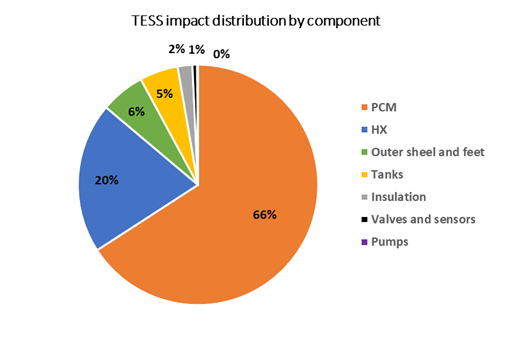PlanEnergi work within CHESTER project is to identify potential business cases for the current and future energy markets. The main goal is analysing and quantifying the market, as well as gaining insights into the potential replication and deployment of the CHEST system. Moreover, PlanEnergi is also looking at the legal requirements and constraints affecting the future implementation of innovative system in different European countries.
Potential business case analysis and baseline definition for business model
Based on the latest research and collected data, PlanEnergi analysis has proven that CHEST technology has higher round-trip efficiency and lower costs than Hydrogen Fuel Cell Storage (HFCSS). Even though the hydrogen technology has been developing for more than 50 years and the CHEST concept arose only a few years ago.
The roundtrip efficiency of HFCSS is considered for 41,5% (more details and assumptions in the public report). For the CHEST system, this is quantified as the power-to-power (P2P) ratio of the overall system.
However, before the CHESTER project started the available information on CHEST systems was very limited. The only reference available regarding the expected roundtrip efficiency was a P2P ratio of 0.56. This was expected to be achieved from the combination of (Iso-)butene and LiNO3·-NaNO3-KNO3[1].
[1] Detailed numerical investigation of a pumped thermal energy storage with low temperature heat integration. H. Jockenhöfer, W.D. Steinmann, D. Bauer. Energy 145 (2018) 665-676.
During the last months, as part of the research carried out in WP4 First-of-its-kind CHEST prototype demonstration, DLR had analysed through simulation different refrigerant and PCM combinations. This have shown that this P2P ratio can be doubled, and consequently reduce the costs and the required PCM volume significantly.
The assessment of different configurations shows that the outline based on Cyclopentane and LiNO3-NaNO3-KCl has a P2P of 1.48, with 30% lower PCM volume requirement (for a system with 1 MWel of ORC capacity, 870 m3 vs 1270 m3) and half of the HTHP installed capacity (for a system with 1 MWel of ORC capacity, 1.0 MWel vs 2.2 MWel).
Moreover, due to the higher P2P, mainly because of higher ORC efficiency, the economic profitability increases, and heat demand from the HT storage to the ORC turbine is reduced. Due to the fact that the PCM storage is the most expensive component of the system, the reduction of storage volume has substantial effects on the economics of the system.
In fact, the economic issues have been further analysed. The following figure shows a comparison between the CHEST and HFCSS for the Aalborg case study that has been carried out within the project scope of work.

Despite the higher investment cost for CHEST, the anticipated revenues are higher by about 20-30% and the operating expenses up to 3.5 times lower compared to hydrogen system. Moreover, PlanEnergi has already identified improvements on the costs side that will be further analysed and quantified during the upcoming months.
The improvements are expected to make the CHEST concept one of the most attractive solution to tackle the technology gap of the electricity storage. According to the estimation of the electricity storage needs, a potential of 330 TWh (for Europe) can be expected for CHEST system for the next decades.
Hence, the CHEST innovation can be successfully used as a means for storing electricity during the energy transition in Europe. Apart from the above-mentioned impacts, the innovative energy system is expected to have the following benefits for the European communities:
- Increase percentage of variable renewable energy sources in grid: Currently growing variable renewable energy sources (RES) electricity outputs (>20%) cannot be utilised by the grid. Due to the above-mentioned features, the CHEST technology is a promising storage solution that can contribute to a growing share of RES in the grid, able to achieve P2P ratios up to 1.5.
- Security of supply: CHESTER provides a storage solution able to absorb variable electricity from RES, thus, planning and resilience are possible. This will make feasible the scenario of offering electricity to the grid when the prices are high and respectively store electricity when prices are low.
- The availability of suitable storage sites for Pumped Hydro Energy Storage (PHES), which currently make up 97% of existing global electricity storage capacity, or technological improvements of this technology are extremely limited. CHESTER does not pose limitations in this regard and can be available anywhere. Thus, allowing to fulfil the electricity storage needs above identified and achieve therefore the envisaged RES objectives.
- Price fluctuation. Energy price peaks exist in whole EU and affect the consumers and EU markets. CHESTER will be able to smooth price peaks, thanks to the flexibility to deliver electricity on demand. The business case approach considered goes for selling electricity when the prices are higher and respectively buying (if needed) when the prices are lowest.
- Support the decarbonisation of the European economy due to the fact the CHEST technology can maximize and enlarge the production of renewable energy sources.
- Reduce the cost-competitive energy market by improving the productivity, efficiency and reducing system costs (due to the fact that electrical storage avoids RES curtailment).
Market analysis and replicability potential
In another task, PlaneEnergi also examined the market potential of CHEST technology. The task was devised in 2 phases:
- Phase 1 Preliminary analysis for the technical potential of the CHEST system.
- Phase 2 with the focus on determining the market economic potential of the CHEST system of this task is still ongoing; PlanEnergi has completed the data collection on costs, as well start working on the analysis in EnergyPLAN with the cost data.
Phase 1 results
PlanEnergi has evaluated 3 scenarios that have been simulated within the project. The performance was analysed to identify in which type of system, the CHEST technology would fit best while respecting its system operation and performances characteristics.
- For the first 2020 scenario, the demand for storage is very low due to the small share of Renewable Energy. Thus, this scenario does not present any area of application for CHEST and was not examined further.
- In the second scenario (2050 Fuel) it is assumed that Combined Heat and Power Plants (CHP) and fuel boilers are still predominant in the heat supply for district heat (DH). Therefore, no synergy effects for CHEST could be generated when the system is integrated into the DH system (CHEST DH Exchange). When the CHEST technology operates independently from the DH grid, a reduction of primary energy supply would become possible. However, a comparison system based on Lithium-Ion batteries (Li-ion) shows larger benefits than CHEST.
- The third scenario (2050 Electric) describes a future where heat pumps replace CHP mostly in the supply of DH. Thus, the electricity demand is increased, and the thermal power production is more efficient. These conditions are more suitable for CHEST technology. In both cases, with and without integration in the DH grid, CHEST reduces the primary energy supply generally. When CHEST is integrated into an electrified district heating system, the technology is even more beneficial than Lithium-Ion batteries.

Development of innovative business models
Based on the carried out previous analysis and business cases, PlanEnergi has disregarded the inviable scenarios.
According to the research, incomplete local energy markets, unharmonized and restrictive regulatory, market and legal frameworks as well as the high CAPEX for storage solutions have been identified as crucial constraints regarding the coupling of energy systems and networks from low-TLR projects. Instead, energy prices, taxes and incentives schemes in the different energy sectors should be redesigned with an enhanced cross-sectoral approach.
Therefore, 3 new promising alternative business models have been created.
- CHEST could offer aggregated services in a mini-grid integrated with several industrial partners.
- CHEST could become a competitor to large pump hydro.
- CHEST could offer transmission and distribution operators an opportunity to avoid curtailment and save them investments in transmission and distribution lines.
This task is still ongoing, and latest results will be reported in the upcoming months.



